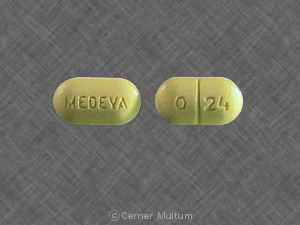Atropine/chlorpheniramine/hyoscyamine/phenylephrine/phenylpropanolamine/scopolamine and Alcohol/Food Interactions
There are 6 alcohol/food/lifestyle interactions with atropine / chlorpheniramine / hyoscyamine / phenylephrine / phenylpropanolamine / scopolamine.
Chlorpheniramine Food
Moderate Food Interaction
Consumer information for this interaction is not currently available.
GENERALLY AVOID: Alcohol may potentiate some of the pharmacologic effects of CNS-active agents. Use in combination may result in additive central nervous system depression and/or impairment of judgment, thinking, and psychomotor skills.
MANAGEMENT: Patients receiving CNS-active agents should be warned of this interaction and advised to avoid or limit consumption of alcohol. Ambulatory patients should be counseled to avoid hazardous activities requiring complete mental alertness and motor coordination until they know how these agents affect them, and to notify their physician if they experience excessive or prolonged CNS effects that interfere with their normal activities.
References
- Warrington SJ, Ankier SI, Turner P (1986) "Evaluation of possible interactions between ethanol and trazodone or amitriptyline." Neuropsychobiology, 15, p. 31-7
- Gilman AG, eds., Nies AS, Rall TW, Taylor P (1990) "Goodman and Gilman's the Pharmacological Basis of Therapeutics." New York, NY: Pergamon Press Inc.
- (2012) "Product Information. Fycompa (perampanel)." Eisai Inc
- (2015) "Product Information. Rexulti (brexpiprazole)." Otsuka American Pharmaceuticals Inc
Phenylpropanolamine Food
Moderate Food Interaction
Consumer information for this interaction is not currently available.
GENERALLY AVOID: Alcohol may potentiate the central nervous system and cardiovascular effects of centrally-acting appetite suppressants. In one study, concurrent administration of methamphetamine (30 mg intravenously) and ethanol (1 gm/kg orally over 30 minutes) increased heart rate by 24 beats/minute compared to methamphetamine alone. This increases cardiac work and myocardial oxygen consumption, which may lead to more adverse cardiovascular effects than either agent alone. Subjective effects of ethanol were diminished in the eight study subjects, but those of methamphetamine were not affected. The pharmacokinetics of methamphetamine were also unaffected except for a decrease in the apparent volume of distribution at steady state.
MANAGEMENT: Concomitant use of centrally-acting appetite suppressants and alcohol should be avoided if possible, especially in patients with a history of cardiovascular disease. Patients should be counselled to avoid hazardous activities requiring complete mental alertness and motor coordination until they know how these agents affect them, and to notify their physician if they experience excessive or prolonged CNS effects that interfere with their normal activities.
References
- Mendelson J, Jones RT, Upton R, Jacob P 3rd (1995) "Methamphetamine and ethanol interactions in humans." Clin Pharmacol Ther, 57, p. 559-68
- (2001) "Product Information. Didrex (benzphetamine)." Pharmacia and Upjohn
- (2012) "Product Information. Suprenza (phentermine)." Akrimax Pharmaceuticals
Scopolamine Food
Minor Food Interaction
Information for this minor interaction is available on the professional version.
Atropine High Blood Pressure (Hypertension)
Minor Potential Hazard, Low plausibility
anticholinergics - hypertension
Cardiovascular effects of anticholinergics may exacerbate hypertension. Therapy with anticholinergic agents should be administered cautiously in patients with hypertension.
References
- (2002) "Product Information. Benadryl (diphenhydramine)." Parke-Davis
- (2001) "Product Information. Antivert (meclizine)." Roerig Division
- (2001) "Product Information. Marezine (cyclizine)." Glaxo Wellcome
- Valentin N, Staffeldt H, Kyst A (1984) "Effect of i.v. atropine on cardiac rhythm, heart rate, blood pressure and airway secretion during isoflurane anaesthesia." Acta Anaesthesiol Scand, 28, p. 621-4
- (2022) "Product Information. Atropine Sulfate (atropine)." ESI Lederle Generics
- (2001) "Product Information. Artane (trihexyphenidyl)." Lederle Laboratories
- (2002) "Product Information. Atropisol (atropine ophthalmic)." Ciba Vision Ophthalmics
Hyoscyamine High Blood Pressure (Hypertension)
Minor Potential Hazard, Low plausibility
anticholinergics - hypertension
Cardiovascular effects of anticholinergics may exacerbate hypertension. Therapy with anticholinergic agents should be administered cautiously in patients with hypertension.
References
- (2002) "Product Information. Benadryl (diphenhydramine)." Parke-Davis
- (2001) "Product Information. Antivert (meclizine)." Roerig Division
- (2001) "Product Information. Marezine (cyclizine)." Glaxo Wellcome
- Valentin N, Staffeldt H, Kyst A (1984) "Effect of i.v. atropine on cardiac rhythm, heart rate, blood pressure and airway secretion during isoflurane anaesthesia." Acta Anaesthesiol Scand, 28, p. 621-4
- (2022) "Product Information. Atropine Sulfate (atropine)." ESI Lederle Generics
- (2001) "Product Information. Artane (trihexyphenidyl)." Lederle Laboratories
- (2002) "Product Information. Atropisol (atropine ophthalmic)." Ciba Vision Ophthalmics
Scopolamine High Blood Pressure (Hypertension)
Minor Potential Hazard, Low plausibility
anticholinergics - hypertension
Cardiovascular effects of anticholinergics may exacerbate hypertension. Therapy with anticholinergic agents should be administered cautiously in patients with hypertension.
References
- (2002) "Product Information. Benadryl (diphenhydramine)." Parke-Davis
- (2001) "Product Information. Antivert (meclizine)." Roerig Division
- (2001) "Product Information. Marezine (cyclizine)." Glaxo Wellcome
- Valentin N, Staffeldt H, Kyst A (1984) "Effect of i.v. atropine on cardiac rhythm, heart rate, blood pressure and airway secretion during isoflurane anaesthesia." Acta Anaesthesiol Scand, 28, p. 621-4
- (2022) "Product Information. Atropine Sulfate (atropine)." ESI Lederle Generics
- (2001) "Product Information. Artane (trihexyphenidyl)." Lederle Laboratories
- (2002) "Product Information. Atropisol (atropine ophthalmic)." Ciba Vision Ophthalmics
Atropine/chlorpheniramine/hyoscyamine/phenylephrine/phenylpropanolamine/scopolamine drug interactions
There are 547 drug interactions with atropine / chlorpheniramine / hyoscyamine / phenylephrine / phenylpropanolamine / scopolamine.
Atropine/chlorpheniramine/hyoscyamine/phenylephrine/phenylpropanolamine/scopolamine disease interactions
There are 28 disease interactions with atropine / chlorpheniramine / hyoscyamine / phenylephrine / phenylpropanolamine / scopolamine which include:
- autonomic neuropathy
- GI obstruction
- glaucoma
- obstructive uropathy
- reactive airway diseases
- myasthenia gravis
- infectious diarrhea
- cardiovascular disease
- cardiac disease
- tachycardia
- anticholinergic effects
- asthma/COPD
- cardiovascular
- renal/liver disease
- coronary artery disease
- gastric ulcer
- gastroesophageal reflux
- ulcerative colitis
- liver disease
- renal failure
- psychosis
- BPH
- diabetes
- glaucoma
- hypertension
- hyperthyroidism
- diarrhea
- fever
Drug Interaction Classification
| Highly clinically significant. Avoid combinations; the risk of the interaction outweighs the benefit. | |
| Moderately clinically significant. Usually avoid combinations; use it only under special circumstances. | |
| Minimally clinically significant. Minimize risk; assess risk and consider an alternative drug, take steps to circumvent the interaction risk and/or institute a monitoring plan. | |
| No interaction information available. |
Further information
Always consult your healthcare provider to ensure the information displayed on this page applies to your personal circumstances.


